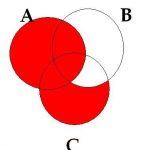What Is?
What is Non-A, Non-B Hepatitis and Hepatitis C?
What is Non-A, Non-B Hepatitis and Hepatitis C? Hepatitis means inflammation of the liver. One frequent cause is viruses. The most common hepatitis viruses are hepatitis A, hepatitis B, and hepatitis C. Previously, viral hepatitis that was not caused by the type A or type B virus was called “non-A, non-B hepatitis.” Recently three more…
Read MoreWhat is NASH?
Alternative names: Nonalcoholic Steatohepatitis, NASH, Nonalcoholic Fatty Liver Disease What is hepatitis? The word “hepatitis” comprises two elements: “-itis” at the end of the word indicates inflammation the first part comes from the organ called hepar, which means liver Hepatitis therefore means inflammation of the liver, like appendicitis means inflammation of the appendix and colitis…
Read MoreWhat is NASH and NAFL?
What is NASH and NAFL? Nonalcoholic Fatty Liver (NAFL)/ Nonalcoholic Steatohepatitis (NASH) What is fatty liver? In fatty liver, fat accumulates in the liver cells. Simple fatty liver usually does not damage the liver, but is a condition that can be identified by taking a sample of liver tissue (liver biopsy) and examining it under…
Read MoreWhat is Liver Dialysis?
What is Liver Dialysis? Liver dialysis is a detoxification treatment for liver failure and has shown promise for patients with hepatorenal syndrome. It is similar to hemodialysis and based on the same principles. Like a bioartificial liver device, it is a form of artificial extracorporeal liver support. A critical issue of the clinical syndrome in…
Read MoreWhat is Jaundice?
What is Jaundice? Jaundice is not a disease but rather a sign that can occur in many different diseases. Jaundice is the yellowish staining of the skin and sclerae (the whites of the eyes) that is caused by high levels in blood of the chemical bilirubin. The color of the skin and sclerae vary depending…
Read MoreWhat is INR?
What is INR? INR or Prothrombin time (PT) evaluates the ability of blood to clot properly, it can be used to help diagnose bleeding. Also known as: Prothrombin Time, Pro Time, Protime Formal name: Prothrombin Time and International Normalized Ratio Related tests: Activated Clotting Time (ACT), Partial Thromboplastin Time (PTT), Prothrombin Consumption Time (PCT), Fibrinogen,…
Read MoreWhat is Hypoglycemia?
What is Hypoglycemia? Hypoglycemia is a condition that occurs when your blood sugar (glucose) is too low. Blood sugar below 70 mg/dL is considered low. Blood sugars at this level can harm you. Causes, incidence, and risk factors Hypoglycemia occurs when: Your body’s sugar (glucose) is used up too quickly Glucose is released into the…
Read MoreWhat is Hypochondria/Cyberchondria?
What is Hypochondria or Cyberchondria? Hypochondria is a very real condition for many people. It is a mental disorder experienced by both men and women where the sufferer believes that they are experiencing medical illness, whether real or imagined. They also believe that the symptoms they have are attributable to serious medical ailments. Hypochondria can…
Read MoreWhat Is Hyperkalemia?
What Is Hyperkalemia? Hyperkalemia (High Potassium) Hyperkalemia is an electrolyte imbalance and is indicated by a high level of potassium in the blood. The normal adult value for potassium is 3.5-5.3 mEq/L. Potassium is one of many electrolytes in your body. It is found inside of cells. Normal levels of potassium are important for the…
Read MoreWhat Is Hereditary Hemorrhagic Telanglectasia (HHT)
What Is Hereditary Hemorrhagic Telanglectasia (HHT) Hereditary Hemorrhagic Telangiectasia (HHT) is a genetic disorder that affects about one in 5,000 people and causes arterial blood to flow directly into the veins, creating weakened ballooned vessels that can rupture. Interventional radiologists are one of the few specialists who can permanently treat this disease that affects approximately…
Read More








